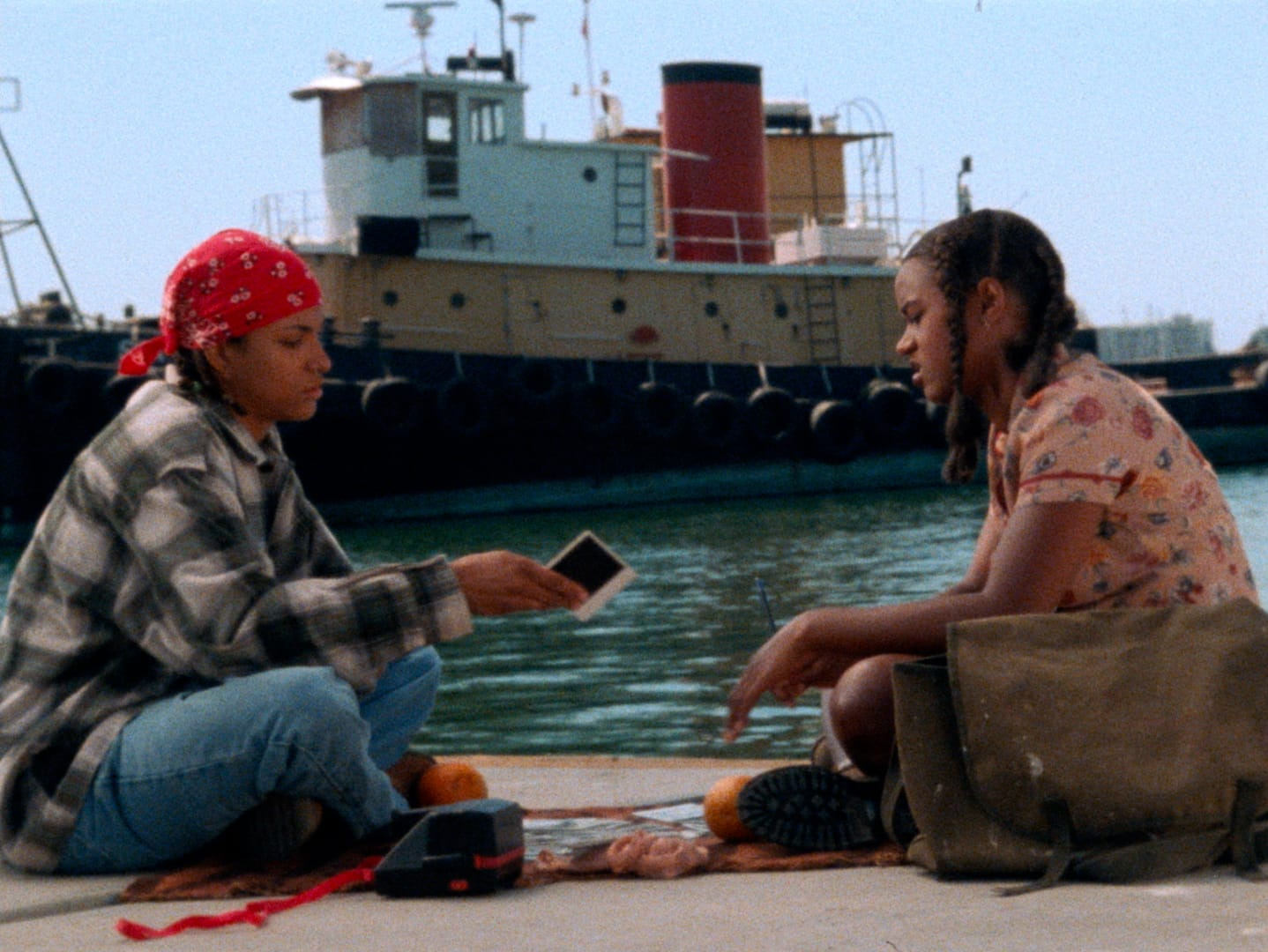Drylongso: A Refuge of Their Own

Exalting Black women’s self-invention with DIY effervescence, Drylongso (1998) is a gorgeously generous study of friendship, creativity, violence, and survival. The multidisciplinary artist Cauleen Smith developed the idea for the project from her habit of taking Polaroid photographs. Shot on 16 mm, with a small budget but a boundless sense of community on both sides of the camera, the film enjoyed an auspicious reception in 1999 at the Sundance, South by Southwest, and Urbanworld Film Festivals, and later earned Smith the distinction of “Someone to Watch” at the Independent Spirit Awards. Despite its many accolades, Drylongso was not picked up for distribution and did not reach the audience it deserved. Though Smith trained as a filmmaker, she eventually found a more welcoming home in the art world; the more than forty short films she has made in the intervening years have mostly been shown as part of installations in museums and galleries around the globe. The recent restoration of Drylongso, which premiered in 2022 and is presented on this release, offers a belated and necessary occasion to reassess this radiant work of everyday Black feminist world-building and its place within the history of independent cinema.
The film, Smith’s debut feature, was made during an explosion of independent Black filmmaking in the late 1980s and 1990s. A corrective to the criminalizing and stigmatizing images of Black people prevalent in American media at the time, this new wave was led by such directors as Spike Lee, Bill Duke, and Wendell B. Harris Jr. But even this significant shift left a form of exclusion intact: Black women filmmakers had less access to funding, were ignored by distributors and denied exhibition platforms, and were barely present in the fields of film criticism and scholarship. When Drylongso premiered, it had been seven years since Julie Dash’s Daughters of the Dust (1991) became the first feature by a Black American woman to receive theatrical distribution, a milestone that was followed by the release of Leslie Harris’s Just Another Girl on the I.R.T. a year later. Demanding more than tepid accommodation, Dash, Harris, and Smith—all of whom have made only one feature to date—radically circumvented the obstacles in their way, depicting Black girls and women in ways that were formally inventive, aesthetically riotous, and fundamentally unimaginable before their films were made.
Although the initial responses to Drylongso were celebratory, they tended to perceive only the attention the film pays to the disposability of Black life in the United States and how this condition affects men and boys. Less discussed was how the movie is ultimately focused on the bond between two young Black women and the ways that they imaginatively, collaboratively choreograph their lives in the face of their common vulnerabilities. Pica (Toby Smith) is a self-assured art student figuring out how to cultivate her craft and tend to her community. In a metacinematic echo of Cauleen Smith’s photographic inspiration for the film, Pica takes Polaroid snapshots of Black boys and men, fearing that they are becoming an endangered species. In an early scene, she starts up a friendship with Tobi (April Barnett), whom Pica witnesses being thrown out of a car and assaulted by her date, Jefferson (Timothy Braggs)—the last straw in the couple’s abusive relationship. The film follows the new friends during the two weeks leading up to Pica’s end-of-semester student exhibition, an event that is inflected with disquieting urgency by the background presence of a serial killer targeting Black youth.








